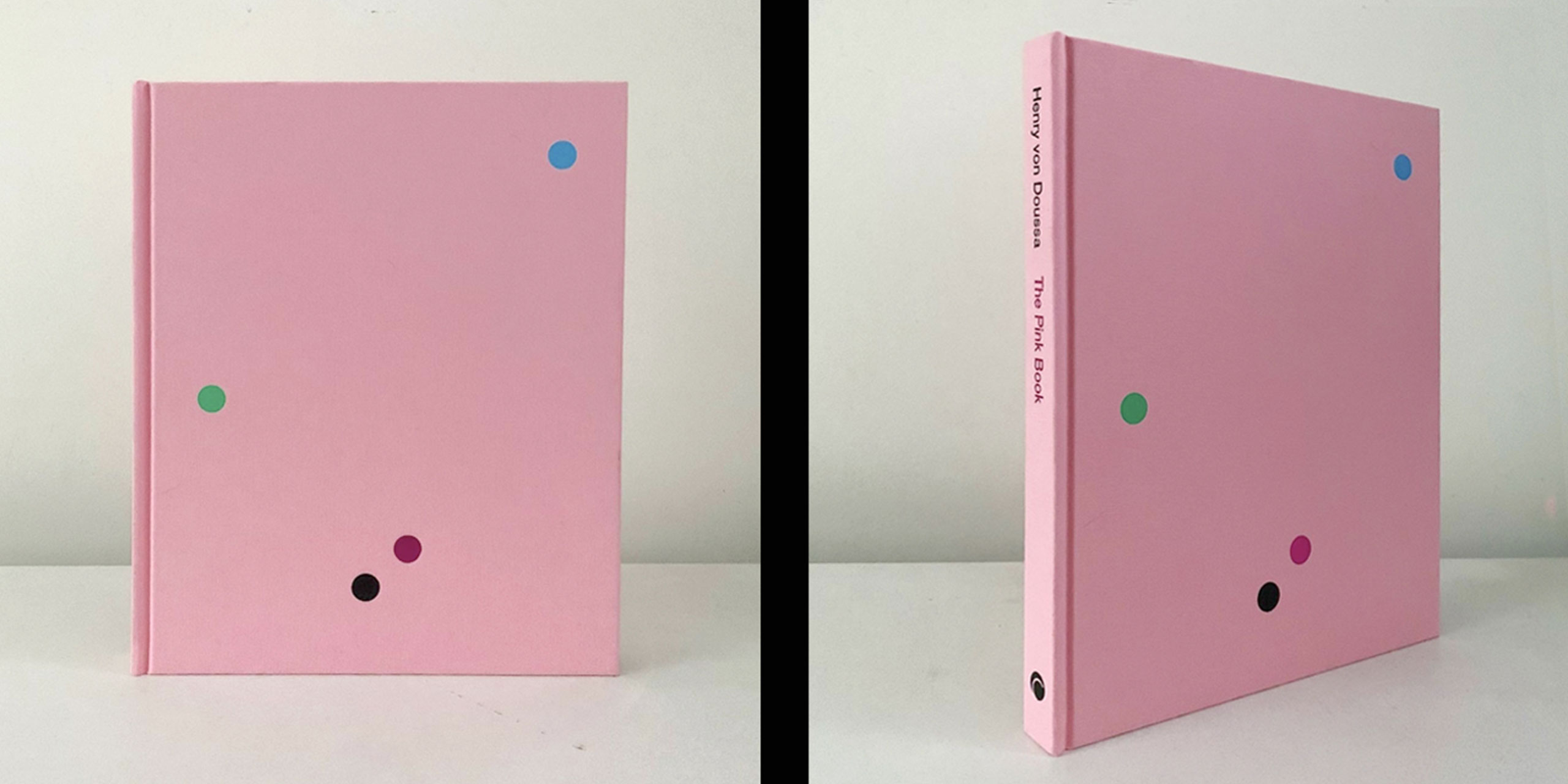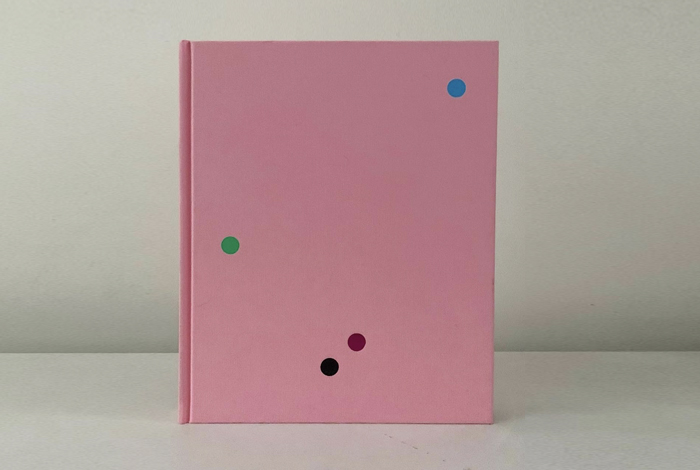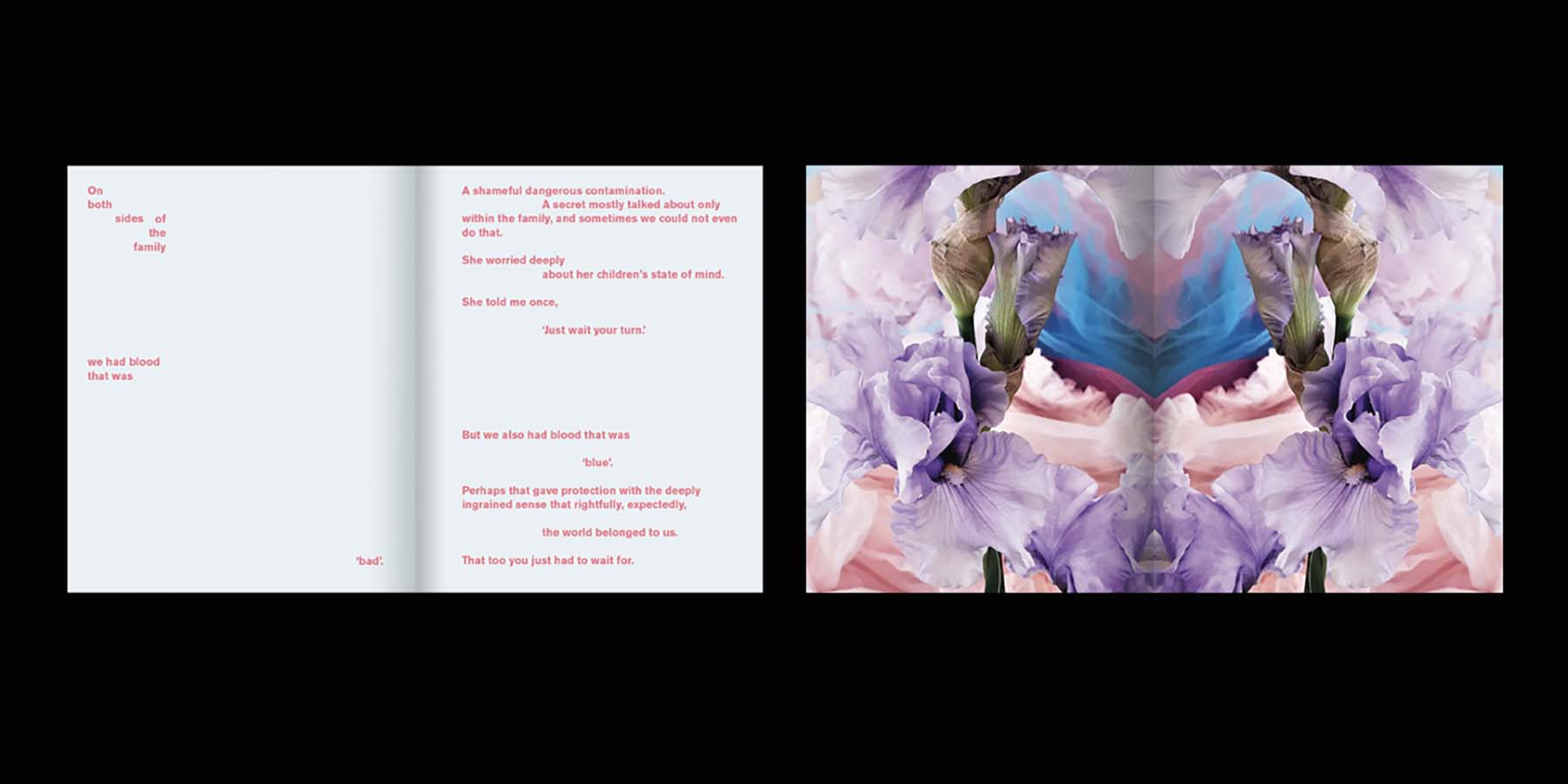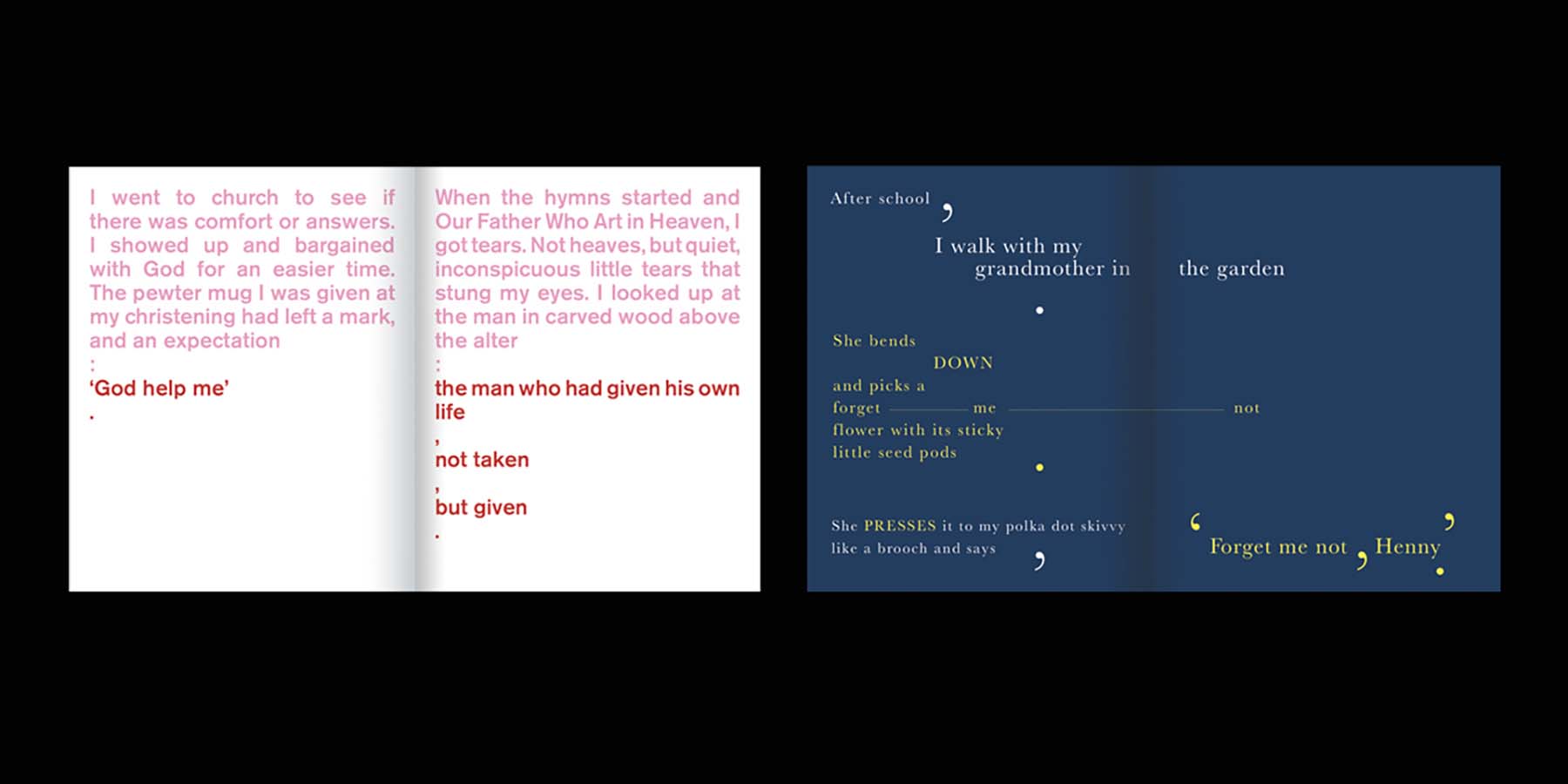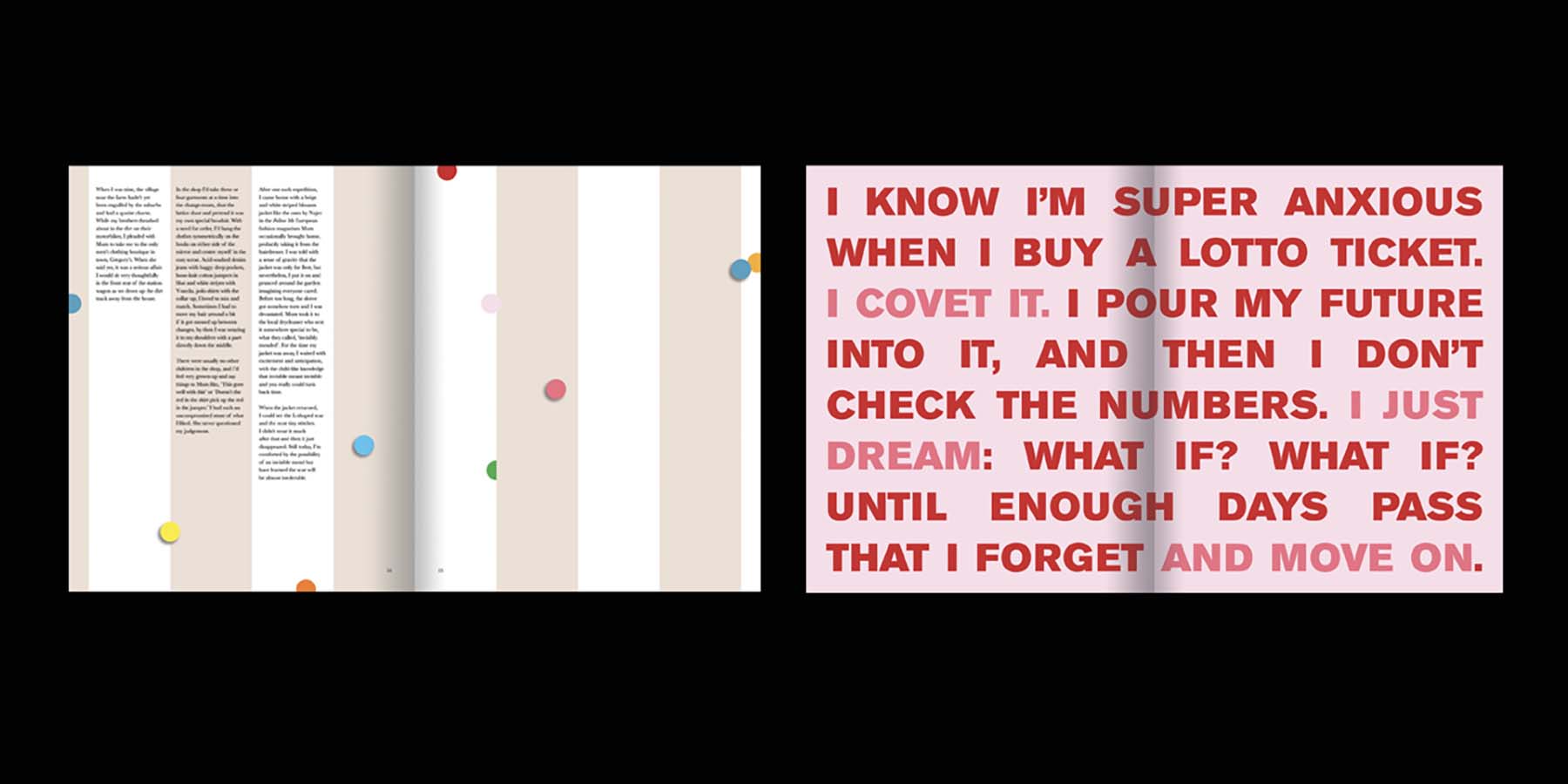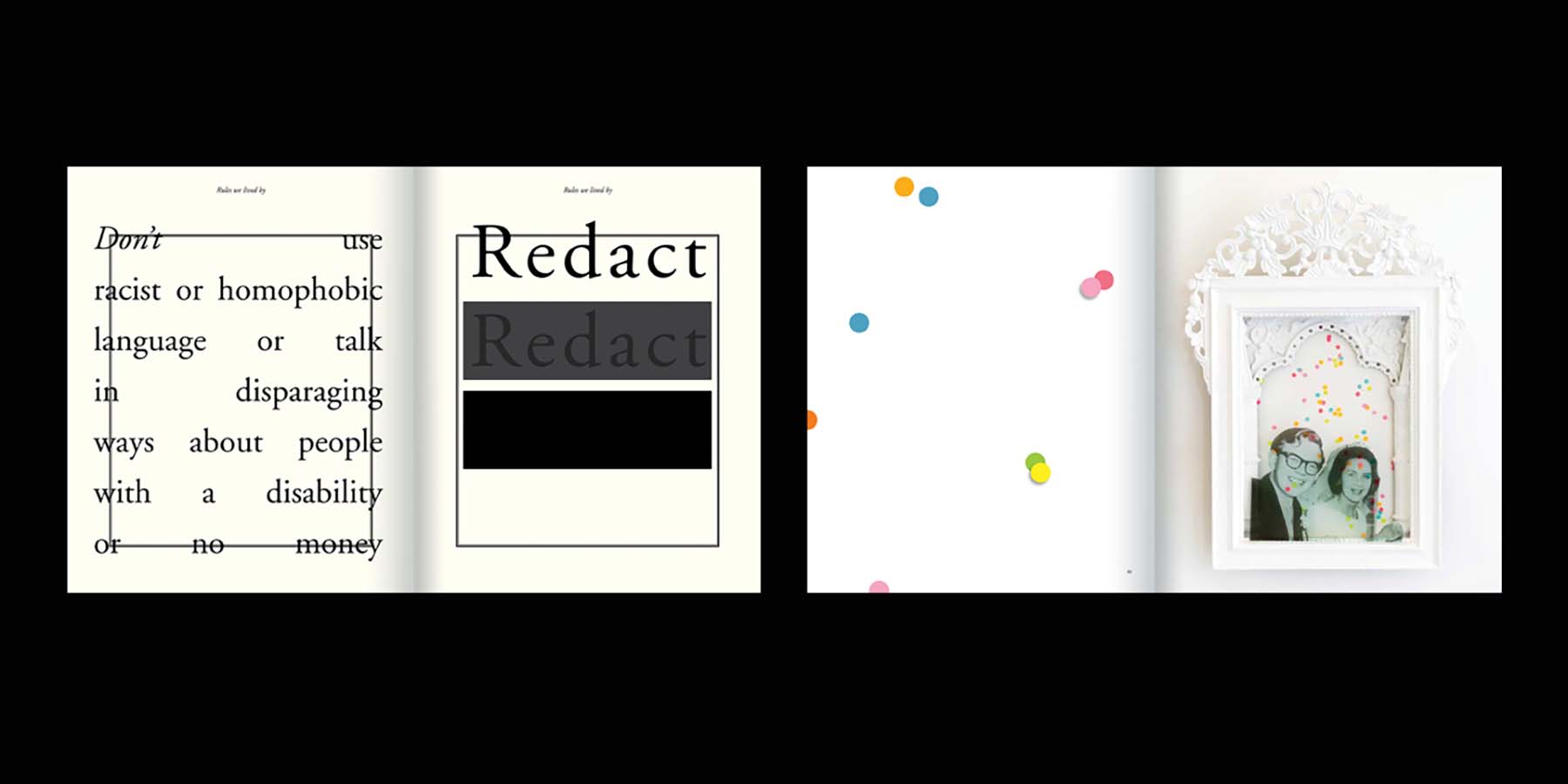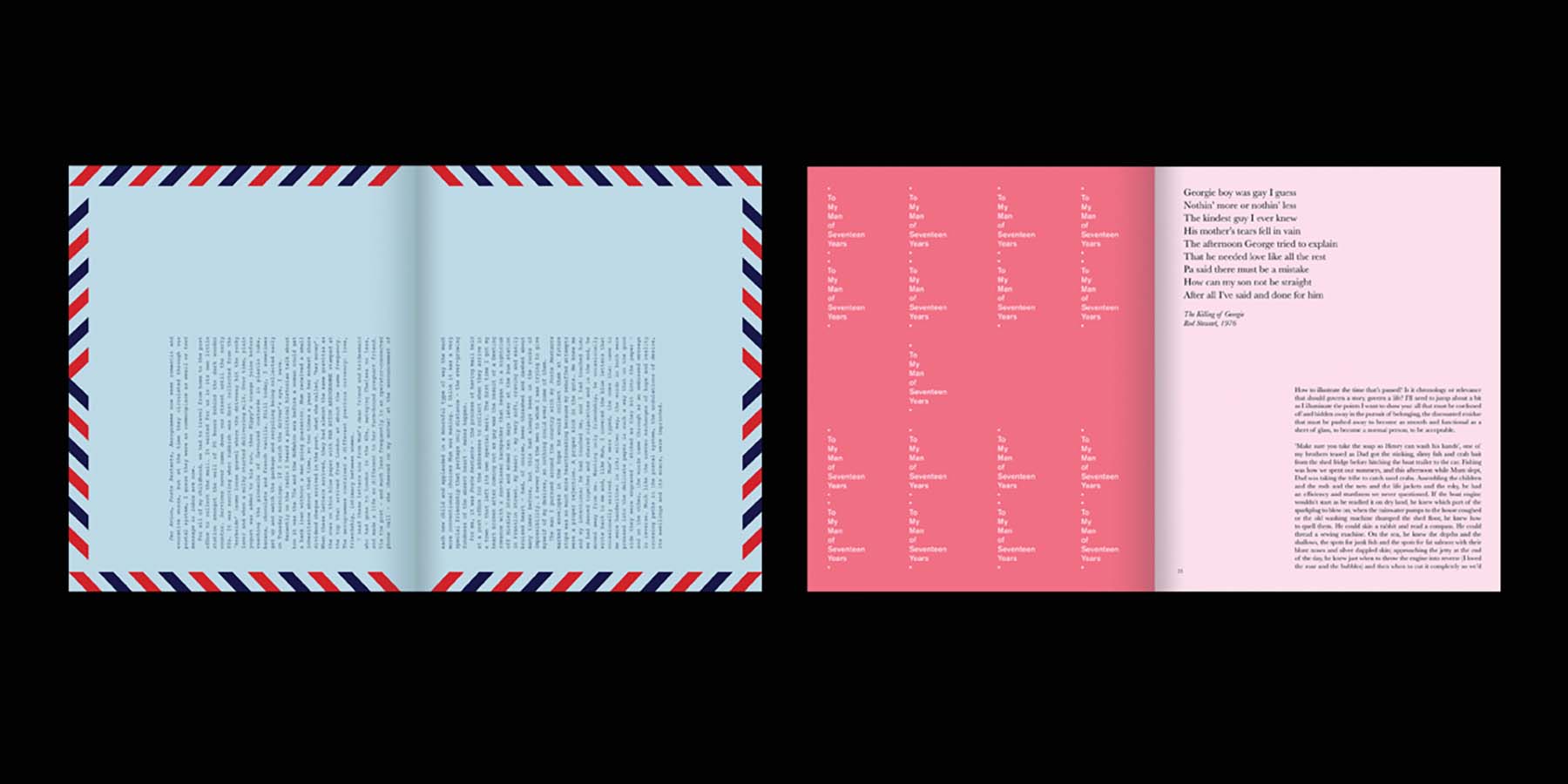When presented with the memoir in manuscript format, Sean Hogan’s first step was to decide how to tell a story which was recollected through creativity: writing, art, photography, object. How the story was told needed to be as fitting as the story itself. Henry writes “How to illustrate the time that’s passed? Is it chronology or relevance that should govern a story, govern a life?” The Pink Book, pg 23. The design process consolidated the structure and running order of the memoir; choosing not to follow a linear timeline, but rather create vignettes of Henry’s life. This method allowed Sean great flexibility in the arrangement of the pages, for the design to evolve into a rhythmically rich and intriguing visual tapestry.
The sum of the book is greater than any individual page, yet paradoxically each page stands alone as its own piece of art. This was achieved through careful attention to typography, colour and layout. Each page was designed with great sensitivity to the subject matter, ranging from the playful and humorous, to puissant themes of sexuality, gender, living with a learning disability, mental health and suicide. Designed with a hard cover, bound in pink linen and pages gilded in magenta, the book is presented as an object to hold. The cover boasts no words, just four coloured circles debossed and foiled, one in metallic to catch the light, referencing the confetti used in Henry’s artworks. The finished book has exceeded the design brief with the client, publisher and general public. The design of The Pink Book has “…created a world of pathos and colour for the reader to enter, away from the black and white of limiting world-views.” Leila Lois, Rochford Street Review, 2022.

